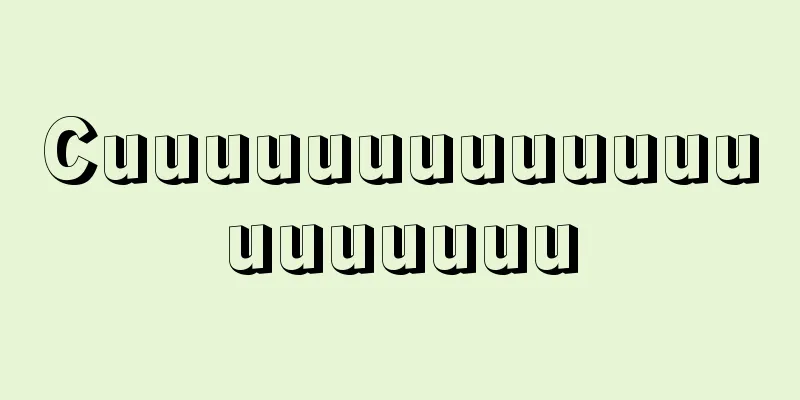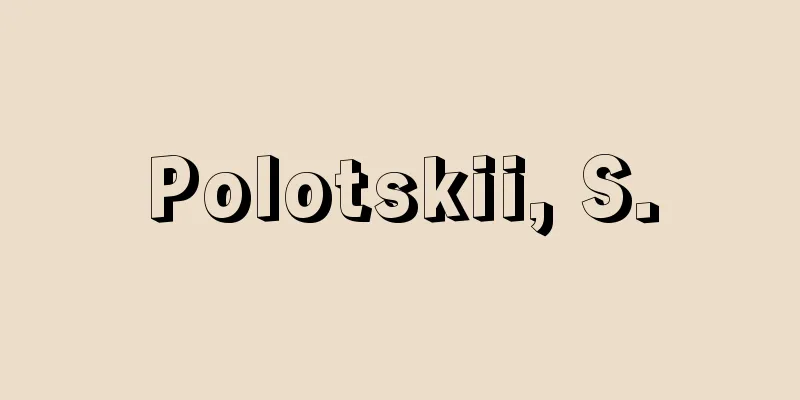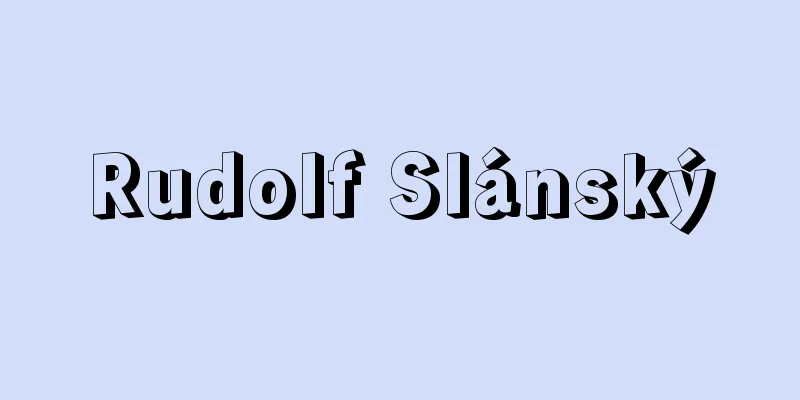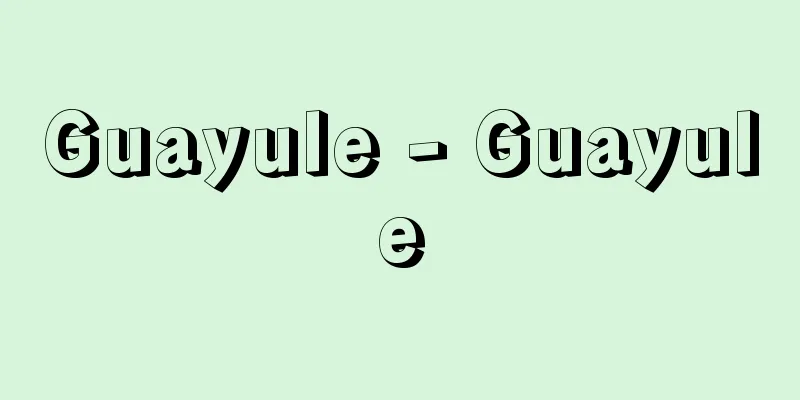Türkiye - Republic of Turkey (English spelling)
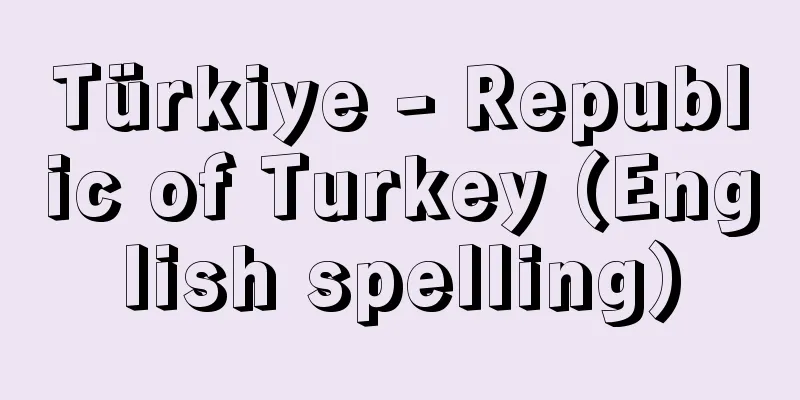
|
A West Asian republic located between Asia and Europe. Its official name is the Republic of Türkiye (Turkey) Cumhuriyeti. Its area is 783,562 square kilometers, and its population is 72,974,000 (estimated in 2006), 77,695,904 (estimated in 2014). Its population density is 93 people per square kilometer. Its capital is Ankara. The Asian part of the peninsula of Asia Minor is called Anatolia (Anadolu in Turkish), and the European part is called Thrace, but 97% of the area and 90% of the population belong to Anatolia. Anatolia borders Georgia, the Republic of Armenia, Iran, Iraq, and Syria in the east and southeast, and Thrace borders Bulgaria and Greece in the west. [End line] NatureterrainIn terms of geological structure, most of Turkey belongs to the Alpine-Himalayan orogenic belt, with multiple mountain ranges running parallel in an approximately east-west direction, making the country mountainous overall. In the Asian part of Anatolia, the Pontus Mountains (Turkish: Doğu Karadeniz Mountains, Eastern Black Sea Mountains) and the Isfendiyar Mountains run along the Black Sea in the north, and the Taurus Mountains run along the Mediterranean Sea in the south. The eastern extension of the Taurus Mountains runs inland as the Eastern Taurus Mountains and the Southeast Taurus Mountains (Turkish: Anti-Taurus Mountains). Between these 2,000-3,000 meter-class main mountain ranges is a rugged plateau called the Anatolian Plateau, which increases in height toward the east and continues to the Armenian Plateau. Volcanic eruptions can also be seen in these mountains and plateaus, and Mount Ararat (Turkish: İrdağ) (5,123 meters) on the Armenian Plateau is the highest peak in Turkey. Meanwhile, in the western Aegean Sea region, faults run east-west at right angles to the coastline, and tectonic mountains and rift plains run parallel to each other. In the Anatolian Plateau, there are rivers such as the Kizil Urmak and Sakarya Rivers, which flow into the Black Sea by a detouring route, and the Seyhan River, which flows south into the Mediterranean Sea. In the Armenian Plateau and the Anti-Taurus Mountains, the Tigris River (known as the Dijre River in Turkish) and the Euphrates River (also known as the Furat River) originate and flow into Iraq and Syria. In the plains along the Aegean coast, there are rivers such as the Buyuk (meaning large) and Menderes River, which gave rise to the word meander (meander). Inland, there are salt lakes such as Lake Van and Lake Tuz. On the European side of Thrace, there are the Ustrangea Mountains to the north and the Garos Mountains to the south, but both are only about 1,000 meters above sea level. The area is generally made up of plains and is irrigated by the Ergene River, a tributary of the Merici River (Maritza River) that flows along the border with Greece. Separating Anatolia from Thrace are the Sea of Marmara, formed by a depression, the Bosphorus at its northeastern end, and the Dardanelles at its southwestern end, both of which are formed by the subsidence of long, narrow erosional valleys that serve as waterways connecting the Mediterranean and Black Seas. [End line] climateTurkey has a temperate climate in most areas, except for some areas such as the central part of the Anatolian Plateau and the Armenian Plateau, and is in a favorable situation in Western Asia, where the dry climate is predominant. A Mediterranean climate is seen from the Aegean coast in the west to the Mediterranean coast in the south, where the summer is hot and dry due to the northward movement of the mid-latitude high pressure belt, but in winter, the climate is warm and rainy due to the influence of mobile low pressure from the Mediterranean area, with an annual precipitation of 500 to 1,500 mm, and in some places even 2,000 mm. The vegetation is dominated by evergreen sclerophyll forests such as olive trees and jungles called maquis (French), which are unique to the Mediterranean coast. The Black Sea coast in the north receives moisture from the Black Sea throughout the year, receives precipitation of 1,000 to 2,000 mm or more per year, and has a humid climate with lush broadleaf and coniferous forests. On the other hand, the Armenian Plateau has a cold, humid climate, with temperatures as low as -40°C in winter. The inland areas of the Anatolian Plateau, as well as the lowlands on the borders of Iran, Iraq, and Syria, are blocked from the ocean by the Pontus and Taurus Mountains, and experience an arid climate with annual precipitation below 500 mm. Semi-desert landscapes can be seen in extremely dry areas such as around Lake Tuz. Istanbul, which straddles the Bosphorus Strait, the border between Europe and Asia, and faces the Sea of Marmara, has an average annual temperature of 14.3°C, a minimum of 6°C in January, a maximum of 23.5°C in July, and an annual precipitation of 691.2 mm. The capital of the Central Anatolia region, Ankara, has an average annual temperature of 11.6°C, a minimum of -2°C in January, a maximum of 23.1°C in July, and an annual precipitation of 402.5 mm. [End line] historyAncient and Middle AgesTurkey is a junction between Asia and Europe, so even before the arrival of the Turks in the 11th century, various ethnic groups lived and interacted, cultural contact occurred, and many nations rose and fell. The world's oldest agricultural settlement, dating back to 6000 BC, is located at Çatalhöyük in central Anatolia. The First Trojan Civilization, which was accompanied by copper tools, flourished around 3500 BC. The Bronze Age culture developed around 2000 BC, but the Hittite Empire emerged around 1650 BC and flourished based on the world's first Iron Age culture. In 1200 BC, Troya was destroyed by Greece in the so-called Trojan War, and around the same time, the Hittite Empire was also driven to extinction by the Phrygians who arrived from Thrace. Between the 11th and 8th centuries BC, Ionians and Dorians from Greece actively colonized the Aegean and Black Sea coasts, and cities such as Miletus, Cnidus, and Sinoppe were established. In 730 BC, the Lydian Kingdom was established inland, but was destroyed by the Achaemenid Empire of Persia in 546 BC, and the whole of Asia Minor, including Greek colonies, soon came under Persian control. Then, between 334 and 333 BC, Asia Minor was conquered by Alexander the Great, and after his death, the kingdoms of Pergamum, Cappadocia, Seleucids, and others were separated, and the Kingdom of Pontus was born in the northeastern part of Asia Minor. However, these countries were destroyed by Rome between the late 2nd century BC and the early 1st century BC, and Roman rule continued for the next 300 years, but when the Roman Empire broke up in 395 AD, it became the territory of the Eastern Roman Empire (Byzantine Empire), and Constantinople (formerly Byzantium, now Istanbul) was chosen as its capital. The Eastern Roman Empire reached its zenith in the 6th century under Emperor Justinian, but in the 7th century it was threatened by the Sassanid Persian Empire and the Islamic Empire (Saracen Empire) in succession. Then, in the 11th century, the Seljuk Turks, which originated in Central Asia, arrived in Asia Minor, overwhelmed the Eastern Roman Empire, took control of most of Anatolia, and laid the foundation for Islamization, but were destroyed by the Mongol invasion in the early 14th century. [End line] Ottoman periodInstead, Ottoman Turkey emerged from western Anatolia, expanding its territory into Asia Minor and the Balkan Peninsula in the 14th century, and capturing Constantinople in 1453, bringing an end to the Eastern Roman Empire. The Ottoman Empire then expanded into a great empire spanning Western Asia, North Africa, and Eastern Europe as a suzerain of Islam, with the Kingdom of Trebizond on the Black Sea coast, which had been left behind in Asia Minor, renamed Istanbul, and developed into a great empire spanning Western Asia, North Africa, and Eastern Europe. However, after reaching its zenith in the 16th century under Suleiman the Magnificent, it gradually declined in the 19th century, allowing Greece and Egypt to gain independence. Furthermore, at the outbreak of World War I in 1914, Ottoman Turkey sided with Germany and Austria, suffering a painful defeat. The Allies planned to divide Turkey under the Treaty of Sevres, and Greece invaded western Anatolia in an attempt to recover its lost territories. However, in 1922, Kemal Ataturk (Mustafa Kemal) overcame these pressures through his skillful diplomacy and strategy, and in 1923 he secured the territory that exists today through the Treaty of Lausanne. [End line] After the RepublicIn 1923, Ankara was chosen as the capital and the Republic of Turkey was established. At that time, the first president, Atatürk, promoted various modernization policies, including the separation of church and state to secularize politics, the adoption of the Roman alphabet instead of the Arabic alphabet, and the adoption of the solar calendar instead of the Islamic calendar. During World War II, the country maintained neutrality for a long time until it declared war on Germany and Japan at the end of the war, but after the war it adopted an anti-communist, pro-Western stance, such as joining the North Atlantic Treaty Organization (NATO) in 1952. After a military coup in 1960, the country transitioned to a Second Republic in 1961, but amid continued political instability, including frequent terrorist attacks, a coup led by Chief of Staff of the Army Kenan Evren (1917-2015) broke out in September 1980, the National Security Council was established, and public order was restored under martial law. [End line] PoliticsPolitical system and political situationThe political system is a republic, with a president as head of state. In November 1982, a new constitution was approved in a national referendum to replace the Second Republic Constitution, which was abolished by a coup in September 1980. The new president was Evren, chairman of the National Security Council, who played a key role in the coup. The old bicameral system of parliament was abolished and replaced by a unicameral system, and a general election was held in November 1983, in which the Fatherland Party won a landslide victory with a majority of the seats, and Turgut Özal (1927-1993), who was not a military man, became prime minister, returning to civilian rule for the first time in three years. In October 1989, Özal became president, marking the first time in 30 years that a civilian president had been elected. In 1993, Prime Minister Demirel became president, and Tansu Ciller (1946- ), leader of the Righteous Party, became Turkey's first female prime minister. In 1995, the number of seats in parliament was increased from 400 to 550, and the voting age was lowered from 20 to 18. In the general election held after this, the Islamic fundamentalist Welfare Party became the largest party, and in July 1996, a government was formed with party leader Necmettin Erbakan (1926-2011) as prime minister. However, Erbakan's government's policies, which emphasized religion, such as encouraging women to wear veils, and promoted the strengthening of diplomatic relations with Islamic countries, were strongly opposed, mainly by the military, which sought secularization. As a result, the government collapsed in June 1997, and the political situation has remained unstable ever since. In May 2000, former Constitutional Court Chief Justice Ahmet Necdet Sezer (1941- ) became president. In the general election of November 2002, the Justice and Development Party (AKP) won a majority of seats in parliament, and the AKP came into power. In the presidential election of 2007, the opposition parties calling for the separation of church and state and secularization boycotted the election, and the parliament was dissolved and a general election was held. In the general election held in July, the AKP won again, and in August of the same year, former foreign minister Gül Abdullah Gül (1950- ) became president. However, tensions between the AKP government, which retained Islamic influences, and the national army and opposition parties calling for the separation of church and state and secularization continued. In addition, a national referendum held in October of the same year changed the direct election system and term of office of the president (from a seven-year term with no reelection allowed to two terms of five years), as well as the term of office of members of parliament (from five years to four years). In August 2014, the first presidential election by direct referendum was held, and Erdogan, who was the prime minister at the time, was elected and took office the same month. The country is divided into 81 provinces (il), which are in turn divided into counties (ilçe). Metropolitan areas are set up for Ankara, Istanbul and Izmir. Provincial governors are appointed by the government. [End line] Foreign Affairs and DefenseTurkey's diplomacy has been based on a pro-Western policy, as seen in its membership in the Council of Europe, the Organization for Economic Cooperation and Development (OECD), and the North Atlantic Treaty Organization (NATO). In 1963, it became an associate member of the European Community (EC), now the European Union (EU), and in 1995 concluded a customs union with the EU, and in 1999 was approved as a candidate for EU membership. Apart from the Erbakan period, Turkey has had close military and economic ties with the United States, and among EU countries, its relationship with Germany, which has sent many migrant workers there for many years, is the strongest. Turkey's relationship with neighboring Greece was strained over the 1974 Cyprus conflict, territorial disputes in the Aegean Sea, and offshore oil fields, but relations between the two countries have been improving since Greece provided relief after the 1999 Turkey earthquake. Turkey had a conflicting relationship with the Soviet Union in political and military terms, but since the collapse of the Soviet Union, its diplomacy has been more proactive, and it has been strengthening its economic cooperation with Turkic republics such as Uzbekistan, a former Soviet republic in Central Asia. Turkey also has a delicate relationship with Iraq over the Kurdish issue, but it receives oil supplies through a pipeline from northern Iraq and earns profits in the form of pipeline tolls on the export of Iraqi oil. The Turkish military, which is a member of NATO, consists of three services: land, navy and air force, with conscription for 6 to 12 months (ages 21 to 41). The army has 402,000 troops in 10 corps, and is equipped with tanks, helicopters, and anti-tank missiles. The navy has 46,600 troops, including destroyers and submarines. The air force has 60,000 troops, and is equipped with Phantom fighter jets and surface-to-air missiles. Turkey has 36,000 troops stationed in the north of Cyprus (Northern Cyprus) as a foreign contingent. It also has troops in the European Union forces in Bosnia and Herzegovina, the International Security Forces in Kosovo, and the International Security Assistance Force in Afghanistan. It also has a military police (Jandarma) with 100,000 troops. [End line] Economy and Industry
[End line] Agriculture, forestry and fisheriesExcept for the central inland region, where arid climate prevails, and the mountainous and cold alpine regions, Turkey is blessed with high summer temperatures, mild winters, and rainfall year-round or in the winter, and in recent years, irrigation projects using state-run dams and groundwater pumping have become widespread, and agriculture is thriving throughout the country. In terms of the national economy, agriculture accounts for 10.3% of GDP (2005) and just over 32% of total employment, and the country is almost self-sufficient in food, with surplus agricultural products being an important export item. The main agricultural products are wheat, barley, grapes, sugar beets, and sunflowers, which are mainly grown in the inland areas, cotton, olives, oranges, lemons, and bananas grown along the Mediterranean coast, olives, tobacco, grapes, and figs along the Aegean coast, and corn, hazelnuts, tea, and tobacco along the Black Sea coast. The country is number one in the world in terms of hazelnuts, figs, apricots, and raisins, and fourth in terms of fresh vegetables and grapes. In recent years, soybean production has also begun along the eastern Mediterranean coast. Poppies are also cultivated in the western inland area for medicinal purposes. Livestock farming is also popular, utilizing the pastures that make up about 19% of the country's land area, with sheep, goats, and cattle being raised. The Ankara region is famous for its Angora goats, known for their high-quality wool. Nomads can be found in southeastern Anatolia and the Taurus Mountains, while modern dairy farming and poultry farming are practiced in the suburbs of cities. Turkey is mountainous and receives a lot of rainfall compared to other parts of Western Asia, and was originally blessed with abundant forest resources, except for Turkey. However, many years of indiscriminate logging and destruction by land reclamation since ancient and medieval times have caused the loss of many resources. However, after the founding of the Republic, the forests were nationalized, and reforestation projects were promoted under the guidance of Atatürk, and as a result, resources are gradually recovering, and timber such as pine and cedar can be seen being cut down in various places. Turkey's forest area is approximately 20,703,122 hectares, accounting for approximately 26% of the country's land area. In Turkey, poplar, which is used as a raw material for papermaking and for timber, is often planted on agricultural land as a field crop. Along the coast, sea bream, bonito, mackerel, sardines, shrimp, and other fish are caught, and in the winter, when fish can be easily kept cold, they are distributed to inland areas such as Ankara. However, even in the coastal areas, fish prices are considerably higher than meat prices. [End line] resourceTurkey is blessed with a wide variety of underground resources, including coal, lignite, petroleum, iron ore, copper ore, chromium ore, manganese ore, zinc ore, lead ore, silver ore, mercury ore, antimony ore, sulfur, boron, bicarbonate of sodalite (trona), and rock salt, due in part to the complex geological structure of the country. In particular, boron reserves account for more than 70% of the world's total. The country also has bicarbonate of sodalite deposits, the second largest in the world. Turkey also has large reserves of iron ore, coal, lignite, and chromium ore, and development is progressing, reflecting the country's resource-dependent economy. For example, the Zonguldak coalfields on the Black Sea coast and the nearby iron ore producing areas are the foundation of the steel industry in Karabük and other areas. Petroleum is produced near Batman in the east, but in limited quantities. Instead, lignite, estimated to have reserves of 8.3 billion tons, supports Turkey's thermal power generation, producing 54 million tons per year. Large-scale thermal power plants are being constructed in close proximity to lignite coalfields, while chromium ore is also being developed for overseas markets. Turkey's marble and natural stone industry has also grown rapidly in recent years. Its marble reserves are estimated at around 5 billion cubic metres, making it one of the country's leading mineral exports. Although the country has abundant hydroelectric resources, in recent years, with the construction of the Keban Dam on the Euphrates River and the Hirfanlı Dam on the Kızılırmak River, dam-based power generation has come into full swing, and coupled with the development of power transmission facilities, the country is becoming increasingly dependent on hydroelectric power. [End line] Industry and TourismWith the founding of the Republic, efforts were made to develop modern industry, and in the 1930s factories such as the Karabük Steel Works, textile, sugar refining, and cement factories were established all over the country. Furthermore, under a series of five-year economic development plans since 1963, industrialization was promoted in many sectors, including steel, metal smelting (aluminum, copper, zinc, etc.), food, agricultural machinery (tractors, combines, etc.), chemical fertilizers, chemical fibers, oil refining, automobiles, and electrical equipment, and large factories sprang up all over the country. The proportion of industry in the gross domestic product (GDP) also surpassed agriculture to reach approximately 25% (2005). Meanwhile, production of ceramics, carpets, leather, glasswork, and other traditional products can still be seen in many places. The region is rich in a variety of historical sites due to the accumulation of the history of the survival and fall of various ethnic groups and nations, and the tourism industry has become increasingly important in recent years as a way of acquiring foreign currency. Particularly famous are the Hittite capital Boğazköy (Hattusaş), the Phrygian capital Gordion, the Greek and Roman cities of Tulva (Troya), Ephesus, and Bergama (Pergamon), Nemrut Dağ (Mount Nemrut), which contains the tombs of the Komagene dynasty, a small kingdom in the Hellenistic period, Istanbul, Iznik (Nicaea), and Trabzon (Trebizond), which are rich in Byzantine historical sites, as well as Konya, Sivas, and Erzurum from the Seljuk period, and Istanbul, Bursa, and Edirne from the Ottoman period. In addition, natural tourism resources include the magnificent volcano Mount Ararat, Pamukkale with its terraced rice fields made of crystallized limestone, and Goreme (Cappadocia), famous for its eroded tuff topography and cave dwellings. Tourism revenues, which were approximately $13.2 million in 2003, reached $18.15 million in 2005. [End line] TradeIn recent years, as Turkey's industrialization has progressed, the proportion of industrial products such as textiles, steel, and machinery has been increasing as an export item. In 2014, exports amounted to $157.71 billion, while imports were $242.22 billion, with both imports and exports showing an upward trend. The main export products are automobiles, machinery, and knitted clothing, while the main import items are petroleum, natural gas, machinery, and steel. The main export partners are Germany, Iraq, and the United Kingdom, while the main import partners are Russia, China, and Germany. The trade deficit has been a trade surplus since the 1960s, and the chronic trade deficit has not been corrected. This deficit is partly compensated for by so-called non-trade income, such as tourism revenues from foreign tourists and remittances from migrant workers in Western European countries. [End line] trafficRailways began to be built in 1856 under the Ottoman Empire with foreign capital from Germany and other countries, but after the establishment of the Republic they were all nationalized and are now run by the Turkish State Railways (TCDD). With a total length of 10,984 km, it is the longest in Western Asia, and major cities are connected by rail, but most of the lines are single-track and mainly diesel locomotives, which limits the speed and number of trains, making it less convenient as a long-distance means of transport. Only the suburbs of major cities such as Ankara and Istanbul are electrified and double-tracked, and commuter trains are available, and a subway has also been opened. Sirkeci Station in Istanbul was once the terminal for the Orient Express. In 2013, the Bosphorus Crossing Railway Tunnel was completed. The main means of land transport is the automobile, with buses, shared taxis (dolmuş), taxis and other services available mainly in cities. However, there are too many vehicles in cities, including private cars, which causes severe traffic paralysis. On the other hand, intercity transport relies more on long-distance buses than on rail, but their role is increasing as national and prefectural roads are paved. The two Bosphorus Bridges, completed in 1973 and 1990, facilitate automobile transport between Asia and Europe. Turkey's coast is surrounded by the Black Sea, the Aegean Sea, and the Mediterranean Sea, and is home to the two major ports of Istanbul and Izmir, as well as ports such as Samsun, Mersin, and Iskenderun. Shipping is operated by companies such as the Turkish Shipping Company (TML), which is responsible for the main shipping routes. In addition to the international airports in Ankara, Istanbul, Izmir, and Adana, there are airports in major cities, where international and domestic flights are operated by the semi-public Turkish Airlines (THY), as well as other private airlines. In addition, flights from many countries in Europe, Asia, and Africa, including Japan, the United Kingdom, the United States, Germany, France, and Russia, fly into Istanbul and other cities. [End line] Society and CulturePeople and LanguageMost of the inhabitants are Turkish, but about 3 million Kurds live in the border areas with Iran and Iraq in southeastern Anatolia, and there are also small numbers of Armenians, Greeks, Arabs, and Jews in various places. In the past, many more Greeks and Armenians lived in this area, but many of the Greeks returned to their homeland due to the long-standing and strained relationship between Turkey and Greece that led to the Cyprus War in 1974, and about 600,000 Armenians were killed and about 1 million were expelled as a result of oppression by the Turkish government during World War I. This is why anti-Turkish terrorist activities by Armenians still occur all over the world. On the other hand, the Kurds are in solidarity with the Kurds living in Iran and Iraq, and there is a strong movement for independence, sometimes using military force to confront them, so the Kurdish issue is Turkey's biggest internal issue. Turkish is the official language, and since 1928 the 29-letter Roman alphabet proposed by Ataturk has been used to replace the Arabic alphabet used until then. The Kurds use the Kurdish language (a Persian language), but in the Kurdish region, there has been a shift to Turkish-style place names. Following the example of developing countries, Turkey's population has been growing at an annual rate of 20-25‰ (per mille, thousandths) since the end of World War II. As of the end of 2008, half of the population was under 29 years old, and the population growth rate was 1.32%. Therefore, the age structure of the population is a typical pyramid shape. In addition, the urban population has increased significantly in recent years due to the influx of people from rural areas to cities. In other words, the urban population, which was one-quarter of the total population in 1945, exceeded one-half in 1985 and reached about 65% in 2000. Corresponding to this phenomenon, in large cities such as Istanbul, Ankara, and Izmir, there has been a rapid increase in illegal hastily constructed houses, known as gecekondu (built overnight), built in a rush on hills adjacent to urban areas. [End line] Education and ReligionThe education system is an 8-3 system, with 8 years of primary school (equivalent to Japanese elementary and junior high schools), followed by 3 years of high school, university, and vocational school. Compulsory education is 8 years of primary school (from age 6 to 13). The adult literacy rate is 88.7%, and the literacy rate for young people (aged 15 to 24) is 96.4% (2007). There are 94 universities in the country (2006), with the most well-known being Ankara University, Middle East Technical University (Ankara), Istanbul University, Istanbul Technical University, Ege University (Izmir), and Ataturk University (Erzurum). The majority of the population, including Turks, Kurds, and Arabs, is Sunni Muslim. Due to the separation of church and state policies based on Ataturk's modernization policy, Islam is no longer the state religion, but religious events such as worship at mosques on the Sabbath (Friday), pilgrimages, and fasting are still observed. [End line] cultureAfter the founding of the Republic, religious traditions were abolished one after another based on the separation of church and state, and freedom of religion was recognized by the 1961 Constitution, but most of the residents are Muslim, and the influence of Islam still lies at the foundation of Turkish culture. Sultan Ahmet Mosque (Blue Mosque) in Istanbul and Selimiye Mosque in Edirne, famous tourist destinations as huge and magnificent mosques (Turkish name Camii) from the Ottoman Empire era, still function as places of prayer for believers today, and many other mosques of various sizes have been built not only in cities but also in small villages all over the country, supporting the religious life of the Turkish people. になったんです。 English: The first thing you can do is to find the best one to do. The newspapers have over 40 daily newspapers, and among them, "Hyriyet," "Mileyet," "National Character," "Sabah," and "Zaman," are the most read with a circulation of 300,000 to hundreds of thousands. The English-language newspapers include "Turkish Daily News." The broadcast is broadcast on more than 260 television stations, including state-run Turkish Radio and Television (TRT), as well as commercial TV NTV, Show TV, SKY TURK, and CNN Turkey. [End line] Relations with Japan
になったんです。 English: The first thing you can do is to find the best one to do. They export food, clothing, general machinery, rugs, etc. to Japan, and mainly import automobiles and machinery from Japan. [End line] "The History of Western Asia II: Iran and Turkey" edited by Nagata Yuzo (New Edition History of Worldwide 9, 2002, Yamakawa Publishing)" ▽ "Sawae Fumiko, "Democratic Politics and Islam in Modern Turkey" (2005, Nakanishiya Publishing)" ▽ "Turkish Turkey: Islam and Europe after September 11th (2008, Akashi Shoten)" ▽ "Turkish Frenzy - The Collapse of the Ottoman Empire and the War of Ataturk" (2008, Sanichi Shobo)" ▽ "Oshima Naomasa, "Turkey and Close Country Turkey" (Chuoko Shinsho)" ▽ "Matsubara Masatake, "Turkey People" (NHK Books)" [References] | | | | | | | | | | | | | | | | | | |Turkish| | |Torus| | | | | | | | | | | | | | [Complementary Materials] |"> Turkey flag ©Shogakukan Illustration/Shogakukan Creative "> Türkiye location map The tomb of Antiochus I is located on the summit of the mountain. There are many huge stone statues on display. The World Cultural Heritage Site "Nemrutt Da" (registered in 1987) Turkey Aduyaman Prefecture © Shogakukan "> Mount Nemurt (Nemrutt d'A) The village spreads out around a fortress made of strange rocks (far left in the photo). There are many strange rocks at the foot of the mountain. World Heritage Site "Göreme National Park and the Rock Caves of Cappadocia" (Turkey, registered in 1985) Uchisar, Turkey ©Shogakukan "> Cappadocia Source: Shogakukan Encyclopedia Nipponica About Encyclopedia Nipponica Information | Legend |
|
アジアとヨーロッパにまたがって所在する西アジアの共和国。正式名称はテュルキイェ(トルコ)共和国Türkiye Cumhuriyeti。面積78万3562平方キロメートル、人口7297万4000(2006推計)、7769万5904(2014推計)。人口密度1平方キロメートル当り93人。首都アンカラ。小アジア半島からなるアジア側領域はアナトリア(トルコ名アナドル)、ヨーロッパ側領域はトラキアとよばれるが、面積の97%、人口の90%はアナトリアに属する。アナトリアは東部、南東部でジョージア(グルジア)、アルメニア共和国、イラン、イラク、シリアに接し、トラキアは西端でブルガリア、ギリシアと接する。 [末尾至行] 自然地形地体構造上、トルコの大部分はアルプス‐ヒマラヤ造山帯に属し、ほぼ東西方向に幾重にも山脈が並走するため、国土は全体に山がちである。 アジア側のアナトリアでは、北部の黒海沿いにポントゥス山脈(トルコ名でドウ・カラデニズ山脈=東黒海山脈)やイスフェンディヤル山脈が、また南部の地中海沿いにはトロス山脈が横たわり、トロス山脈の東の延長は東トロス山脈や南東トロス山脈(トルコ名でアンティ・トーラス山脈)となって内陸部を走る。これら2000~3000メートル級の主要山脈の間は、山脈が横たわって起伏に富む高原でアナトリア高原とよばれ、東に向かって高度を増し、アルメニア高原へと続く。これらの山地、高原には火山の噴出もみられ、アルメニア高原上のアララト火山(トルコ名でアール・ダー)(5123メートル)がトルコの最高峰である。一方、西部のエーゲ海沿いの地域では、海岸線と直角の東西方向に断層が走り、地塁山地と地溝平野が並走している。 アナトリア高原には、迂回(うかい)して黒海へ流出するクズル・ウルマク川やサカリヤ川、南流して地中海へ注ぐセイハン川などがあり、アルメニア高原およびアンティ・トーラス山脈からは、ティグリス川(トルコ名でディジュレ川)とユーフラテス川(同じくフラト川)が源を発し、イラク、シリアへと流出する。また、エーゲ海沿岸の平野には、蛇行(だこう)(メアンダー)の語源となったビュユック(大の意)・メンデレス川などが流れる。内陸部にはバン湖やトゥズ湖などの塩湖がみられる。 ヨーロッパ側のトラキアは、北にウストランジャ山脈、南にガロス山地があるが、ともに高度は1000メートル程度にすぎず、全般に平野が広がり、ギリシアとの国境を流れるメリチ川(マリーツァ川)の支流エルゲネ川が潤している。 アナトリアとトラキアを隔てるのは、陥没によって生じたマルマラ海と、その北東端にあるボスポラス海峡、および南西端にあるダーダネルス海峡である。これらの海峡はともに細長い侵食谷の沈降したものであり、地中海と黒海を結ぶ連絡水路となっている。 [末尾至行] 気候トルコの気候は、アナトリア高原の中央部やアルメニア高原など一部の地域を除いて、ほとんどの地域で温帯気候を呈し、乾燥気候が卓越する西アジアのなかにあっては恵まれた状況にある。西部のエーゲ海沿岸から南部の地中海沿岸にかけては地中海性気候がみられ、夏は中緯度高圧帯の北上によって高温となり乾燥するが、冬は地中海方面からの移動性低気圧の影響で温暖多雨となり、年降水量は500~1500ミリメートル、所によっては2000ミリメートルにも達する。植生も、オリーブなどの常緑硬葉樹林や、地中海沿岸特有のマキmaquis(フランス語)とよばれる叢林(そうりん)が卓越する。北部の黒海沿岸部は、1年を通じて黒海からの湿気を受け、年間1000~2000ミリメートルまたはそれ以上の降水をみ、湿潤気候を呈し、広葉樹林、針葉樹林が繁茂する。他方、アルメニア高原は冬に零下40℃を記録するほど気温が低く、冷帯湿潤気候を呈する。また、アナトリア高原の内陸部は、ポントゥス山脈やトロス山脈によって海の影響が遮られるため、同じく内陸性の強いイラン、イラク、シリアの国境地帯の低地とともに、年降水量が500ミリメートルを下回って乾燥気候となり、トゥズ湖周辺など極度に乾燥する所では半砂漠景観がみられる。ヨーロッパとアジアの境界ボスポラス海峡をまたぎ、マルマラ海に面したイスタンブールの年平均気温は14.3℃、最低は1月の6℃、最高は7月の23.5℃、年降水量は691.2ミリメートル。中部アナトリア地方の首都アンカラの年平均気温は11.6℃で最低は1月の零下2℃、最高は7月の23.1℃、年降水量は402.5ミリメートルである。 [末尾至行] 歴史古代・中世トルコの国土はアジアとヨーロッパを結ぶ接点にあたるため、11世紀にトルコ民族が到来する以前から、さまざまな民族が居住・交流し、文化の接触も行われ、多くの国家が興亡した。アナトリア中央部のチャタル・ヒュユクには、紀元前6000年の世界最古の農耕集落遺跡がある。銅器を伴ったトロヤ第一期文明は前3500年ごろに栄えている。ついで前2000年ごろには青銅器文化が発達するが、前1650年ごろにはヒッタイト王国が勃興(ぼっこう)し、世界最初の鉄器文化を基礎に栄えた。前1200年にはトロヤがいわゆるトロヤ戦争によってギリシアに滅ぼされ、同じころヒッタイト王国もトラキアから到来したフリギア人によって滅亡へと追い込まれた。前11~前8世紀には、ギリシアからイオニア人、ドーリス人のエーゲ海・黒海沿岸への植民が活発となり、ミレトス、クニドス、シノッペなどの都市が興った。前730年には内陸部にリディア王国が誕生するが、前546年アケメネス朝ペルシアによって滅ぼされ、ギリシアの植民都市も含めて小アジア全域はほどなくペルシアの支配下に入った。 ついで前334~前333年、小アジアはアレクサンドロス大王によって征服され、大王の死後はペルガモン、カッパドキア、セレウコスなどの王国が分立し、また小アジア北東部にはポントス王国が誕生した。しかしこれらの国は、前2世紀後期から前1世紀前期にかけてローマによって滅ぼされ、以後300年にわたってローマの支配が続くが、紀元後395年のローマ帝国の分裂に際して東ローマ帝国(ビザンティン帝国)の領土となり、コンスタンティノープル(旧ビザンティウム、現イスタンブール)がその首都に選ばれた。東ローマ帝国は6世紀、ユスティニアヌス帝時代に全盛期を迎えたが、7世紀にはササン朝ペルシア、イスラム帝国(サラセン帝国)に相次いで脅かされた。ついで11世紀には、中央アジアに発したセルジューク・トルコが小アジアに到来し、東ローマ帝国を圧倒してアナトリアの大部分を支配し、イスラム化を基礎づけたが、モンゴルの侵入によって14世紀初頭には滅亡した。 [末尾至行] オスマン帝国時代かわってアナトリア西部から台頭したのはオスマン・トルコで、14世紀には小アジアのほかバルカン半島にも領土を拡大し、1453年にはコンスタンティノープルを落として東ローマ帝国に終焉(しゅうえん)をもたらした。その後、小アジアに取り残された黒海沿岸のトレビゾンド王国もあわせ、コンスタンティノープルを改称したイスタンブールを首都とし、オスマン帝国はイスラム教の宗主国として西アジア、北アフリカ、東ヨーロッパにまたがる大帝国に発展したが、16世紀のスレイマン大帝の時代に全盛期を迎えたあとは、19世紀にギリシアやエジプトの独立を許すなど、しだいに衰退へと赴いた。さらに1914年、第一次世界大戦の勃発(ぼっぱつ)に際しては、ドイツ、オーストリア側に加担して手痛い敗北を喫した。連合国はセーブル条約によってトルコの分割を策し、ギリシアは失地回復を目ざしてアナトリア西部に侵入した。しかし1922年、ケマル・アタチュルク(ムスタファ・ケマル)の巧みな外交と戦略によってこれらを打破し、1923年にはローザンヌ条約によって今日の領土を確保した。 [末尾至行] 共和国の発足以後1923年、首都にアンカラが選ばれ、トルコ共和国が発足するとともに、初代大統領のアタチュルクは、政治を世俗化するための政教分離、アラビア文字にかえてのローマ字採用、イスラム暦にかえての太陽暦採用など、さまざまな近代化政策を推し進めた。 第二次世界大戦では、その末期にドイツ、日本に宣戦布告するまで長く中立を守ったが、戦後は1952年に北大西洋条約機構(NATO(ナトー))に加盟するなど、反共・親西側路線をとってきた。1960年の軍部によるクーデターののち、1961年からは第二共和制へと移行したが、テロが頻発するなどの政情不安が続くなか、1980年9月にはエブレンKenan Evren(1917―2015)軍参謀総長を中心とするクーデターが勃発(ぼっぱつ)し、国家保安評議会が設置され、戒厳令下、治安の回復がもたらされた。 [末尾至行] 政治政治制度・政情政体は共和国で、元首は大統領。1980年9月のクーデターによって廃止された第二共和制憲法にかわり、1982年11月、新憲法が国民投票の結果承認された。新大統領にはクーデターの主役、国家保安評議会議長エブレンが就任した。議会は旧来の上下二院制が廃止されて一院制となり、1983年11月に総選挙が行われた結果、祖国党が定数の過半を制して大勝し、軍人出身でないオザルTurgut Özal(1927―1993)が首相に就任して3年ぶりに民政に復帰した。さらに1989年10月にはオザルが大統領に就任し、30年ぶりに文民大統領の誕生をみている。また、1993年には、首相デミレルが大統領となり、正道党の党首チルレルTansu Ciller(1946― )がトルコで初の女性首相として登場した。 1995年、議会の定数を400人から550人とし、選挙権を20歳から18歳に引き下げるなどの選挙法改正があったのちに実施された総選挙で、イスラム原理主義の福祉党が第一党となり、1996年7月には党首エルバカンNecmettin Erbakan(1926―2011)を首相とする政権が発足した。しかし、女性のベール着用の奨励などの宗教重視の姿勢や、イスラム諸国との外交関係強化を打ち出すエルバカン政権の施策には、世俗化を求める軍部を中心とした反対も強く、そのためもあって1997年6月には政権はもろくも瓦解(がかい)し、その後も不安定な政情が続いている。2000年5月に前憲法裁判所長官のセゼルAhmet Necdet Sezer(1941― )が大統領に就任。2002年11月の総選挙で公正発展党(AKP)が議会の過半数議席を獲得し、AKPの単独政権が成立した。2007年の議会における大統領選挙では政教分離・世俗化を求める野党のボイコットがあり投票が成立せず、議会解散・総選挙となった。7月に行われた総選挙で、AKPがふたたび大勝し、同年8月に前外相のギュルAbdullah Gül(1950― )が大統領に就任したが、イスラム色を残すAKP政府と政教分離・世俗化を求める国軍、野党との緊張関係が続いた。また、同年10月に行われた国民投票で大統領の直接選挙制と任期の変更(任期7年で再選禁止から5年で2期までとなる)、ならびに国会議員の任期の変更(5年から4年へ)がなされた。2014年8月には初の直接国民投票による大統領選挙が行われ、首相であったエルドアンが当選し、同月就任した。 全土は81の県(イルil)に分かれ、県の下は郡(イルチェilçe)に分かれる。なお、アンカラ、イスタンブール、イズミルには大都市圏域が設定されている。県知事は政府の任命による。 [末尾至行] 外交・防衛トルコの外交は、ヨーロッパ会議や経済協力開発機構(OECD)、あるいは北大西洋条約機構(NATO(ナトー))に加盟するなど、親西側政策で貫かれてきた。1963年にはヨーロッパ共同体(EC)――現ヨーロッパ連合(EU)の準加盟国となり、さらに1995年にはEUとの間での関税同盟を締結、1999年にはEUの加盟候補国として承認された。エルバカン時代は別として、アメリカとの関係は軍事、経済面を通じて緊密であり、またEU諸国のなかでは、長年多数の出稼ぎ労働者を送り出した先であるドイツとの関係がもっとも強い。隣国ギリシアとは、1974年のキプロス紛争やエーゲ海の領海問題、海底油田問題などをめぐって険悪な関係にあったが、1999年にトルコ大地震が起こった際、ギリシアが救援活動を行ったことをきっかけに両国の関係は改善の方向にある。ソ連とは政治・軍事面で相反する関係にあったが、ソ連解体後はトルコ外交の積極性が目だち、中央アジアの旧ソ連構成共和国ウズベキスタンなど、トルコ系共和国との経済協力関係の強化が図られている。また、イラクとは、クルド人問題をめぐって微妙な関係にあるが、イラク北部からのパイプラインによって石油の供給を受け、またイラク石油の輸出向け分に対してはパイプライン通過料という利潤を得ている。 NATOに属するトルコ軍は、陸海空の3軍からなり、兵役6~12か月(21~41歳)の徴兵制がとられている。陸軍は兵力40万2000、10個軍団からなり、戦車、ヘリコプター、対戦車ミサイルなどを装備する。海軍は兵力4万6600で、駆逐艦、潜水艦などを有する。空軍は兵力6万、ファントム戦闘機、地対空ミサイルなどを装備する。外国派遣部隊としてキプロス島北部(北キプロス)に3万6000の兵力が駐留。ボスニア・ヘルツェゴビナのヨーロッパ連合軍、コソボ国際治安部隊、アフガニスタン国際治安支援部隊にも兵を派遣している。ほかに軍警察(ジャンダルマjandarma)10万の兵力をもつ。 [末尾至行] 経済・産業
[末尾至行] 農林漁業乾燥気候の卓越する中央内陸部や、山がちで寒さの厳しい高山部を除けば、トルコは夏の高温と冬の温暖、および周年または冬の降水に恵まれ、さらに近年は国営のダムや地下水くみ上げによる灌漑(かんがい)事業も行き渡り、農業は全土にわたって盛んである。国民経済のうえからは、農業はGDPの10.3%(2005)、全雇用の32%強を占め、食糧はほぼ自給可能であり、余剰農産物は重要な輸出品となっている。 おもな農産物は、主として内陸部でつくられる小麦、大麦、ブドウ、テンサイ、ヒマワリ、地中海沿岸で栽培されるワタ、オリーブ、オレンジ、レモン、バナナ、エーゲ海沿岸のオリーブ、タバコ、ブドウ、イチジク、黒海沿岸のトウモロコシ、ヘイゼルナッツ、茶、タバコなどであり、ヘイゼルナッツ、イチジク、アンズ、干しぶどうの生産量は世界第1位、生鮮野菜、ブドウ生産量は第4位である。近年は地中海東部沿岸で大豆の生産も始められた。また内陸部西部では医薬用にケシも栽培されている。 国土の約19%を占める牧草地などを利用した牧畜も盛んであり、ヒツジ、ヤギ、ウシなどが飼われる。アンカラ地方で産する毛質のよいアンゴラヤギは有名である。アナトリア南東部やトロス山脈には遊牧民がみられるが、一方、都市近郊では近代的な酪農業や養鶏業が営まれている。 西アジアのなかでは山がちで降水量も多く、元来トルコの他は豊かな森林資源に恵まれていたが、古代・中世以来の長年の乱伐と開墾による破壊によって多くの資源を失ってきた。しかし、共和国の発足後、森林は国有化され、アタチュルクの唱導によって植林事業も進められた結果、資源も回復されつつあり、マツ、スギなどの用材の切り出しも各地でみられる。トルコの森林面積は約2070万3122ヘクタールで、国土の約26%を占めている。なおトルコにおいては、製紙原料や用材用となるポプラが、畑作物として農耕地に植え付けられることが多い。 沿岸各地ではタイ、カツオ、サバ、イワシ、エビなどの漁獲があり、保冷の容易な冬には内陸部のアンカラなどにも魚が流通する。しかし魚価は沿岸部においても肉に比べてかなり高価である。 [末尾至行] 資源トルコは地体構造が複雑なこともあって、石炭、亜炭、石油、鉄鉱、銅鉱、クロム鉱、マンガン鉱、亜鉛鉱、鉛鉱、銀鉱、水銀鉱、アンチモン鉱、硫黄(いおう)、ホウ素、重炭酸ソーダ石(トロナ)、岩塩など、多種類の地下資源に恵まれている。とくにホウ素は世界の埋蔵量の70%以上を占める。また、世界第2位の埋蔵量をもつ重炭酸ソーダ石鉱床もある。鉄鉱、石炭、亜炭、クロム鉱などの埋蔵量も多く、国内資源依存経済を反映して開発は進んでおり、たとえば黒海沿岸のゾングルダク炭田と付近の鉄鉱産地は、カラビュクなどの鉄鋼業の基盤となっている。石油は東部のバトマン付近で産するが量的に乏しい。これにかわってトルコの火力発電を支えているのは、埋蔵量83億トンと見込まれる亜炭で年間5400万トンを産出。亜炭炭田に近接して大型火力発電所の建設も盛んである。一方、クロム鉱は海外市場向けにも開発されている。 また近年は大理石・自然石産業が急成長している。トルコの大理石埋蔵量は約50億立方メートルと推定されており、鉱物輸出の上位にある。 水力資源は豊富であるが、近年はユーフラテス川のケバン・ダム、クズル・ウルマク川のヒルファンル・ダムなどが建設され、ダム式発電が本格化し、送電施設の整備と相まって、水力電気への依存が高まりつつある。 [末尾至行] 工業・観光業共和国の発足とともに近代工業の育成に力が入れられ、1930年代にはカラビュク製鉄所をはじめ、繊維、精糖、セメントなどの工場が各地に誕生した。さらに1963年からのたび重なる経済開発五か年計画のもとでは、鉄鋼、金属製錬(アルミニウム、銅、亜鉛など)、食料品、農業機械(トラクター、コンバインなど)、化学肥料、化学繊維、石油精製、自動車、電気機器など、多くの業種で工業化が図られ、各地に大工場が出現している。国内総生産(GDP)のなかで工業が占める割合も、農業を抜いて約25%(2005)に達する。一方、古い伝統をもった陶磁器、じゅうたん、皮革、ガラス細工などの生産も各地にみられる。 さまざまな民族や国家の存亡の歴史が蓄積しているため多様な史跡に富み、観光産業も外貨獲得のうえから近年重要性を増している。ヒッタイトの首都遺跡ボアズキョイ(ハットウシャシュ)、フリギアの首都遺跡ゴルディオン、ギリシア・ローマ時代の都市遺跡トゥルワ(トロヤ)、エフェス(エフェソス)、ベルガマ(ペルガモン)、ヘレニズム時代の小王国コマゲネ王朝の墳墓のあるネムルット・ダー(ネムルト山)、ビザンティン時代の史跡に富むイスタンブール、イズニック(ニケーア)、トラブゾン(トレビゾンド)、同じくセルジューク時代のコンヤ、シバス、エルズルム、およびオスマン時代のイスタンブール、ブルサ、エディルネなどはとりわけ著名である。また、自然観光資源としては秀峰アララト火山、石灰の結晶した棚田状の景観をもつパムッカレ、凝灰岩の侵食地形と洞窟(どうくつ)住居跡で有名なギョレメ(カッパドキア)などがある。2003年に約1320万ドルであった観光収入は、2005年には1815万ドルに達している。 [末尾至行] 貿易トルコの輸出品は、工業化の進んだ近年、繊維製品、鉄鋼、機械類などの工業製品がその割合を増やしつつある。2014年の輸出額は1577億1000万ドル、輸入額は2422億2000万ドルで、輸入、輸出とも増加傾向にある。 おもな輸出産品は自動車、機械類、ニット衣類、おもな輸入品目は石油・天然ガス、機械類、鉄鋼である。おもな輸出相手国はドイツ、イラク、イギリス、おもな輸入相手国はロシア、中国、ドイツである。貿易尻(じり)は1960年代以来の輸入超過であり、慢性的な赤字は改まっていない。この赤字は、外国人観光客からの観光収入や西ヨーロッパ諸国への出稼ぎ労働者からの本国送金など、いわゆる貿易外収入によりいくぶん補われている。 [末尾至行] 交通鉄道はオスマン帝国時代の1856年から、ドイツなどの外国資本によって敷設され始めたが、共和国成立後はすべて国有化され、現在トルコ国有鉄道(TCDD)によって経営されている。路線延長は1万0984キロメートルで西アジア随一であり、主要都市は鉄道で結ばれているが、ほとんどは単線でディーゼル機関車が主力であり、速度、運行本数に限界があって長距離交通機関としての便利さに欠けている。アンカラ、イスタンブールなどの大都市近郊部だけは電化、複線化され通勤電車も通じ、また、地下鉄も開通している。なお、イスタンブールのシルケジ駅は、かつてオリエント急行のターミナルであった。2013年にはボスポラス海峡を横断する「ボスポラス海峡横断鉄道トンネル」が完成した。 主要な陸上交通機関は自動車で、都市を中心にバス、乗合タクシー(ドルムシュ)、タクシーなどの便がある。しかし都市では自家用車も含めて台数が多すぎ、交通麻痺(まひ)が著しい。一方、都市間交通は鉄道よりも長距離バスに依存する面が強いが、国道、県道の舗装整備が進むとともに、その役割は増加している。なお、1973年、1990年に完成した2本のボスポラス海峡橋は、アジアとヨーロッパにまたがる自動車交通を容易にしている。 黒海、エーゲ海、地中海によって取り囲まれたトルコの沿岸には、イスタンブール、イズミルの二大港をはじめ、サムスン、メルシン、イスケンデルンなどの港湾があり、主要航路を受け持つトルコ海運公社(TML)などによって海運が営まれている。 アンカラ、イスタンブール、イズミル、アダナの国際空港のほか、主要都市には空港があり、半官半民のトルコ航空(THY)によって国際線と国内線が運営されており、ほかに民間航空会社がある。また、日本や英米独仏露をはじめ、ヨーロッパ、アジア、アフリカの多数の国々の航空便がイスタンブールなどに乗り入れている。 [末尾至行] 社会・文化住民・言語住民のほとんどはトルコ人であるが、アナトリア南東部のイラン、イラクとの国境地帯には約300万人のクルド人が住み、アルメニア人、ギリシア人、アラブ人、ユダヤ人なども各地に少数居住する。かつてはより多数のギリシア人、アルメニア人がこの地に居住していたが、ギリシア人の多くは1974年のキプロス紛争に至る長年の険悪なトルコ・ギリシア関係によって本国へ引き揚げ、アルメニア人は第一次世界大戦中のトルコ政府による弾圧の結果、約60万人が命を奪われ、約100万人が追放されたという。いまだにアルメニア人による反トルコのテロ活動が世界各地で起こるのはそのためである。他方、クルド人も、イラン、イラクに住むクルド人と連帯し、独立を求める動きが強く、ときには軍事力を行使してこれに対決するなど、トルコにとってクルド人問題は最大の内政問題である。 言語はトルコ語が公用語であり、文字は1928年以降、それまでのアラビア文字にかわって、アタチュルクの発案による29文字からなるローマ字が採用されている。なおクルド人はクルド語(ペルシア語系)を慣用するが、クルド地域ではトルコ風(ふう)地名への転換が進んでいる。 開発途上国の例にならい、トルコの人口は第二次世界大戦後、ほぼ年率20~25‰(パーミル、千分率)程度で増加してきた。2008年末では人口の半分が29歳以下で、人口増加率は1.32%であった。したがって年齢別人口構造も典型的なピラミッド型を呈する。また、農村部から都市への人口流入により、近年は都市人口の増加が著しい。すなわち、1945年に全人口の4分の1であった都市人口は1985年からは2分の1を超え、2000年には約65%に達している。この現象と対応し、イスタンブール、アンカラ、イズミルなどの大都市では、市街地に隣接した丘陵上などに、ゲジェコンドゥ(一夜建て)という名で知られる、突貫工事による非合法急造家屋が急増している。 [末尾至行] 教育・宗教教育制度は八・三制で日本の小・中学校にあたる初等学校が8年、その上に高等学校が3年、さらに大学、職業学校がある。義務教育は初等の8年間(6~13歳)となっている。成人識字率は88.7%、若者(15~24歳)識字率は96.4%(2007)に達する。全国で94の大学(2006)を数えるが、アンカラ大学、中東工科大学(アンカラ)、イスタンブール大学、イスタンブール工科大学、エーゲ大学(イズミル)、アタチュルク大学(エルズルム)などは著名である。 宗教は、トルコ人のほかクルド人、アラブ人も含め、スンニー派イスラム教が主である。アタチュルクの近代化政策に基づく政教分離策によって、イスラム教は国教ではなくなったが、安息日(金曜日)のモスクでの礼拝や、巡礼、断食などの宗教的行事は依然としてみられる。 [末尾至行] 文化共和国発足後は、政教分離に基づいて宗教的因襲は次々と廃止され、1961年の憲法によって信仰の自由も認められるようになってはいるが、住民のほとんどはイスラム教徒であり、イスラム教の影響は依然としてトルコ文化の基底に横たわっている。オスマン帝国時代の巨大・壮麗なモスク(トルコ名ジャミィ)として観光上も著名なイスタンブールのスルタン・アフメット・モスク(ブルー・モスク)やエディルネのセリミエ・モスクなどは、今日でも信者の祈りの場として機能しており、そのほか、大小さまざまのモスクが都市だけではなく全土の小さな村々にまで建立され、トルコ民衆の宗教生活を支えている。 中央アジアの遊牧民に起源するトルコ人は勇猛、剛毅(ごうき)な気質をいまにとどめている。歴史的には、十字軍や、オスマン帝国時代に統治、支配されたキリスト教徒によって、不幸にもトルコ人の残虐性が誇張されたほどである。また、トルコ人には、夏ごとにヤイラとよばれる山地の涼しい場所で避暑生活を送る習慣が広く認められるが、これも夏季冷涼な中央アジアに慣れ親しんでいた遊牧生活の名残(なごり)とされている。国土の97%がアジアに属するところから日本にも親近感を示すなど、トルコ人にはアジアの一員としての意識がある反面、他方では、長年にわたるドイツとの親密関係があり、ヨーロッパ連合(EU)への本格加盟を目ざすなど、ヨーロッパの一員としての意識も強いものがある。たとえば「ヨーロッパ随一の交通事故国」といった表現が新聞の見出しに用いられる。トルコ人の好むスポーツはサッカー、レスリングで、とりわけプロ・サッカーの試合には熱狂する。 新聞は日刊紙だけで40以上を数え、そのなかで『ヒュリイェット(自由)』紙、『ミリイェット(国民性)』紙、『サバフ』紙、『ザマン』紙などは、発行部数30万~数十万でもっとも読まれている。英字紙に『ターキッシュ・デーリー・ニューズ』などがある。放送は国営のトルコ・ラジオ・テレビ放送(TRT)のほか、民放のNTV、Show TV、SKY TURK、CNNトルコなど260以上のテレビ局が放送を行っている。 [末尾至行] 日本との関係
日本とは1925年(大正14)に国交が樹立され、互いに大使館を開設した。産油国でないため両国の経済・貿易関係は活発ではなかったが、経済協力開発機構(OECD)のトルコ援助の議決により、1979年(昭和54)以来、日本からも特別援助が供与され始めた。一方、ダム建設や水産高校の創設に協力し、合弁のトラクター工場も誕生するなど、日本からトルコに対する技術協力、経済投資の事例もその後増加した。1985年には首相オザルが来日し、また第二ボスポラス橋の建設工事を日本企業グループが国際入札で受注するなど、両国関係は一段と緊密になった。1990年(平成2)には海部俊樹(かいふとしき)が日本の首相として初訪問し、さらに大手自動車工業の進出もみられる。対日貿易は例年大幅な輸入超過を示している。日本へは食料品、衣類、一般機械、敷物などを輸出し、日本からはおもに自動車、機械類を輸入する。 [末尾至行] 『永田雄三編『西アジア史Ⅱ イラン・トルコ』(『新版世界各国史9』2002・山川出版社)』▽『澤江史子著『現代トルコの民主政治とイスラーム』(2005・ナカニシヤ出版)』▽『内藤正典編著『激動のトルコ――9・11以後のイスラームとヨーロッパ』(2008・明石書店)』▽『トゥルグット・オザクマン著、鈴木麻矢訳『トルコ狂乱――オスマン帝国崩壊とアタテュルクの戦争』(2008・三一書房)』▽『大島直政著『遠くて近い国トルコ』(中公新書)』▽『松原正毅著『トルコの人びと』(NHKブックス)』 [参照項目] | | | | | | | | | | | | | | | | | | | | | | | | | | | | | | | | | | | | | | | | [補完資料] |"> トルコの国旗 ©Shogakukan 作図/小学館クリエイティブ"> トルコ位置図 山頂にあるアンティオコス1世の墓。いくつもの巨大な石像が配されている。世界文化遺産「ネムルット・ダー」(トルコ・1987年登録) トルコ アドゥヤマン県©Shogakukan"> ネムルト山(ネムルット・ダー) 奇岩を利用した要塞(写真左奥)を中心に広がる集落。麓にはいくつもの奇岩が見られる。世界複合遺産「ギョレメ国立公園とカッパドキアの岩窟群」(トルコ・1985年登録) トルコ ウチヒサル©Shogakukan"> カッパドキア 出典 小学館 日本大百科全書(ニッポニカ)日本大百科全書(ニッポニカ)について 情報 | 凡例 |
Recommend
Sympathomimetic agent
...Includes sympathomimetics, sympatholytics, par...
Cardan type trolley
…An axle without a drive unit is called a driven ...
Ah - After
〘Noun〙 (Chinese slang from the Six Dynasties perio...
Magadan (English spelling)
The capital of Magadan Oblast in northeastern Russ...
holding
...A type of ball game. Two teams of six (or nine...
Spaarne
...Since the end of the 19th century, it has been...
Shopping goods - Kaimawarihin (English)
When we look at consumer purchasing habits and beh...
Ludd, N.
…A series of machine-breaking incidents that occu...
Francis, JB (English spelling) FrancisJB
…The Fourneron turbine is the basis of modern wat...
Wool fabric - woolen fabric
It primarily refers to woolen fabrics made from s...
Environmental Radiation Monitoring
…In contrast, radiation resulting from peaceful u...
EVITA
The brand name of skin care products, makeup cosme...
Ticket gate
〘 noun 〙① (━suru) To check passenger tickets, admi...
Bridge of Avignon - Bridge of Avignon
… After the fall of the Roman Empire, notable bri...
Close Call - Close Call
...This work is characterized by its departure fr...
